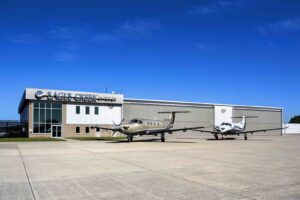Garmin announced it has received Federal Aviation Administration (FAA) Supplemental Type Certification (STC) for the GFC 500 Autopilot in additional aircraft models to include the Cirrus SR22, and the Cessna 206 C through F models. The GFC 500 Autopilot is intended for light piston aircraft while delivering superior in-flight characteristics, self-monitoring capabilities and minimal maintenance needs when compared to older generation autopilot systems.
New aircraft models now approved for the GFC 500 autopilot include:
• Cirrus SR22
• Cessna 206 – Models: C, D, E, F
The GFC 500 autopilot uniquely integrates with the GI 275 or G5 electronic flight instruments; a combination of either a standby GI 275 or G5 electronic flight instrument interfaced to a G500 TXi™ flight display; or a G3X Touch™ flight display to provide pilots with an economical and modern autopilot solution. The autopilot mode controller contains large dedicated keys and knobs, a control wheel that allows for easy adjustment to aircraft pitch, airspeed and vertical speed and a Level Mode that returns the aircraft to straight-and-level flight with the push of a dedicated button.
The full-featured GFC 500 autopilot provides a long list of existing general aviation aircraft with a simple, lightweight, cost-effective autopilot upgrade path. Incorporating solid state attitude with robust self-monitoring capabilities, the GFC 500 provides superior autopilot performance, greater reliability, and safety benefits that are similar to the popular GFC 700 autopilot. In addition to traditional autopilot capabilities such as altitude hold, vertical speed and heading modes, the GFC 500 also includes altitude preselect, VNAV1, Level Mode, Underspeed and Overspeed protection and more. Pilots can also select, couple and fly various instrument approaches, including GPS, ILS, VOR, LOC and back course approaches when paired with a compatible Garmin GPS navigator.
As a standard feature, pilots receive Garmin Electronic Stability and Protection (ESP), which works to assist the pilot in maintaining the aircraft in a stable flight condition. ESP functions independently of the autopilot and works in the background to help pilots avoid inadvertent flight attitudes or bank angles and provides airspeed protection while the pilot is hand-flying the aircraft.





